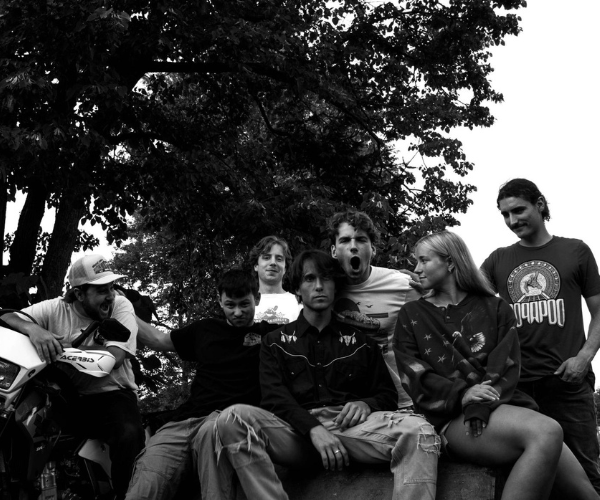In the second half of the 19th century, Mark Twain called Euclid Avenue “one of the finest streets in America.”
By the 1890s, nearly 260 houses lined the avenue, the largest reaching 50,000 square feet, about 23 times the average American house size today. Here, the world’s first electric streetlight and streetcar appeared. Residents entertained presidents. In the winter, people gathered on the avenue to watch afternoon sleigh races and, in the summer, to listen to concerts on the lawns.
Little evidence of Euclid Avenue’s belle époque remains today. Only nine of the original houses survive. The elms that once lined the avenue have long since fallen from disease. Empty, weed-covered parking lots have replaced sprawling lawns. Near the East 55th Street overpass, a series of deserted brick warehouses display a spray-paint proclamation, “Moving — everything must go.” The words echo eerily down the avenue, forcing the question, “Is that how it really happened?”
I look for the answer at the Western Reserve Historical Society, which will be exploring the later period of the avenue’s prosperity, from 1880 to 1930, in Millionaires’ Row: The Legacy. Much of the historical society is housed within two of the avenue’s original residences: the Hay-McKinney and Bingham-Hanna homes.
The Hay-McKinney mansion, designed by the youngest son of President James A. Garfield, was home to the family of Price McKinney, a wealthy industrialist who owned McKinney Steel Co. in the early 20th century. Today, museum curators occupy the former servants’ quarters and fill old bedrooms with furniture rescued from other avenue homes.
Coralie Walker Hanna, the widow of industrialist Leonard C. Hanna, owned the Bingham-Hanna home. Designed by the architectural firm of Walker and Gillette, it featured a garden by the Central Park design firm Olmsted Brothers and ironwork by Samuel Yellin. Today, the garden’s fountains flow just as they did in the 1920s, and a fireplace is engraved with Yellin’s signature.
“Although Euclid Avenue is a shadow of what it was, there is a continuing legacy that exists throughout Greater Cleveland,” says Dean Zimmerman, the historical society’s chief curator.
He pulls out a stack of papers with photographs of old homes and home interiors.
“This is my favorite part,” he says, pointing out what relics remain from the historic photos. He hands me a picture of the Sylvester T. Everett home’s grand hallway, trod by J.P. Morgan, Andrew Carnegie and presidents Grant, Hayes, Harrison, McKinley, Taft and Harding. At the top of the staircase sits one of the historical society’s salvaged treasures, a bust of Everett’s wife, Alice, carved by an Italian sculptor during the Everetts’ grand tour of Europe.
Next, on a tour of the exhibition space, Zimmerman shows off the kitchen of the servants’ quarters, where the pantry shelves are fully stocked, and the grand staircase in the home of John Hay, who was a private secretary to President Abraham Lincoln. The hand-carved banister was one of Clara Hay’s most beloved pieces in a house known for its wooden carpentry.
The empty walls of the main exhibition hall, which was built to connect the two houses, will soon feature giant, reproduced postcards and an early 20th-century map of the avenue.
Zimmerman chronicles both the private and public lives of the steady, self-made businessmen, lawyers, doctors and industrialists who made their successes Cleveland’s successes. He explains how progress created a juggernaut. The business district expanded, the avenue turned into a thoroughfare, real estate taxes rose and immigration threatened the street’s privacy.
The residents’ final battle cry came in the 1896 fight to name the avenue a boulevard, which should have protected it from further commercialization. Although Cleveland park commissioners approved the plan, they never adopted it and, ultimately, annulled it.
Charles F. Brush and John D. Rockefeller ordered their houses razed after they died, preferring the homes’ destruction to inevitable deterioration.
But the legacy of Euclid Avenue doesn’t end with fallen houses. The philanthropy of long-gone avenue residents lives on. Zimmerman explains how they left an indelible mark on the arts, medicine, technology and education. Wade Oval, Public Square, Forest Hills, The Cleveland Museum of Art, University School and The Cleveland Clinic are among the places and institutions that have greatly benefitted from their millions.
Cleveland no longer has a central street as its source of pride. However, the Grand Avenue exists in more than just a nostalgic sigh. It’s woven into investments: landscapes, institutions, communities — let it suffice to say the identity of Cleveland as we know it.
Millionaires’ Row: The Legacy will run from Sept. 24 to May 31, 2006, at the Western Reserve Historical Society, 10825 East Blvd., Cleveland. For more information, call (216) 721-5722 or visit www.wrhs.org.



